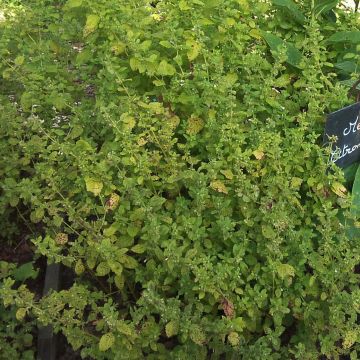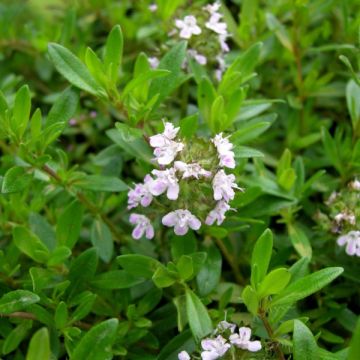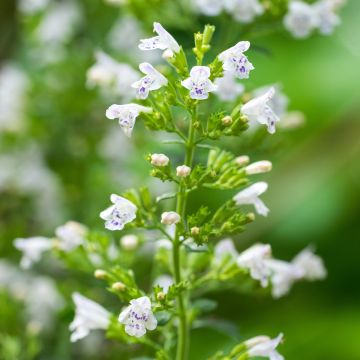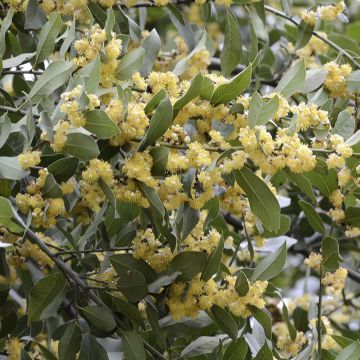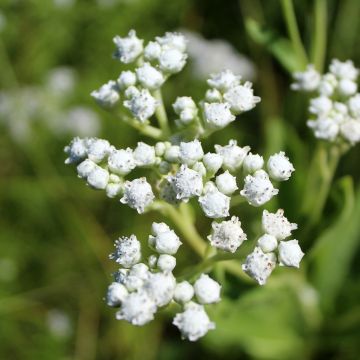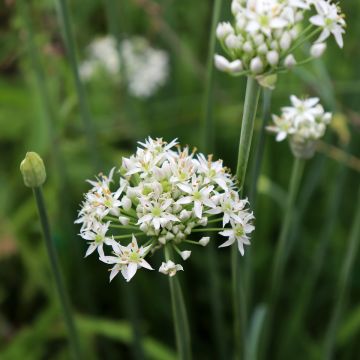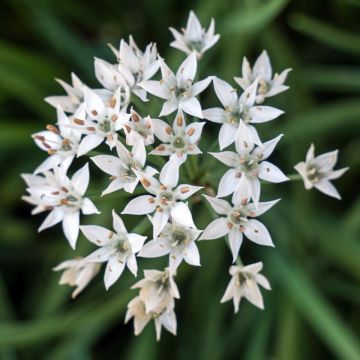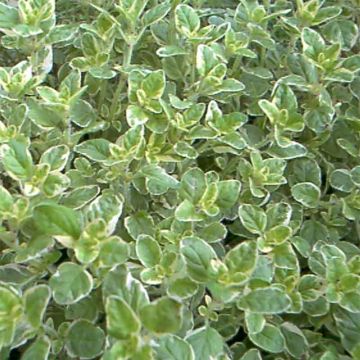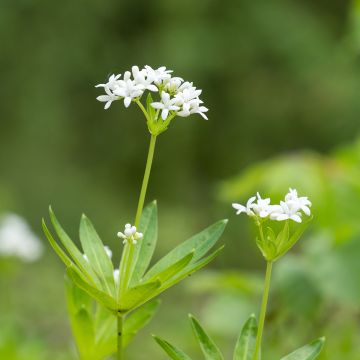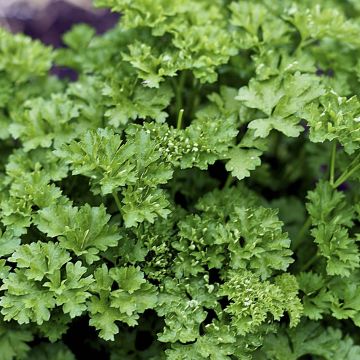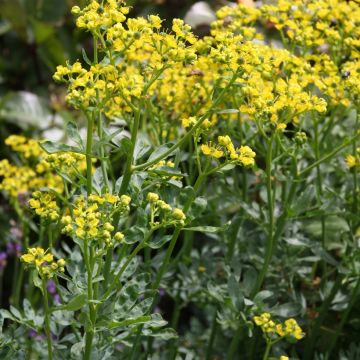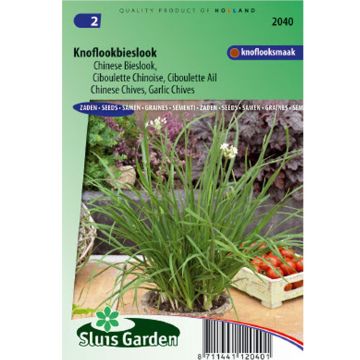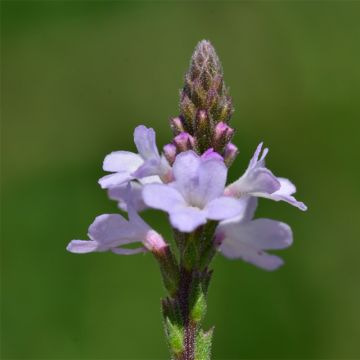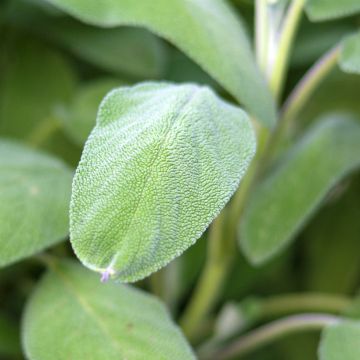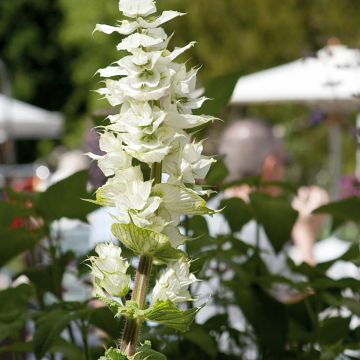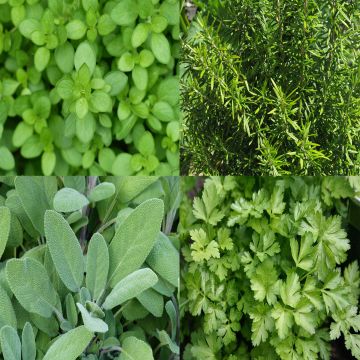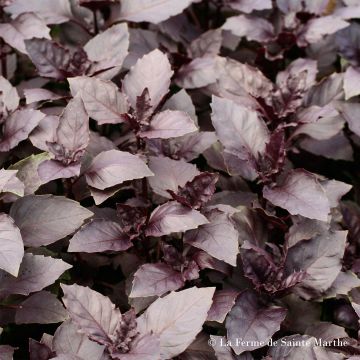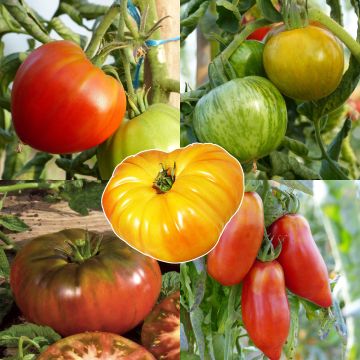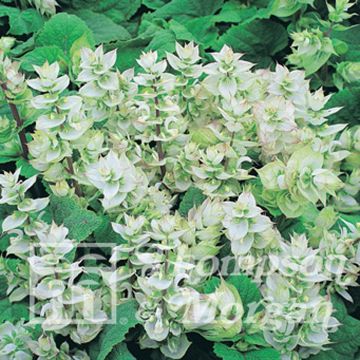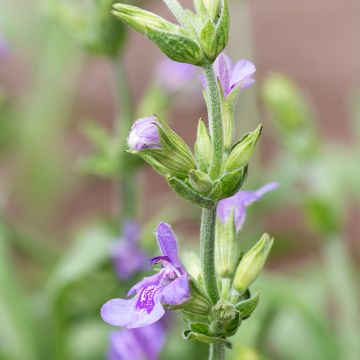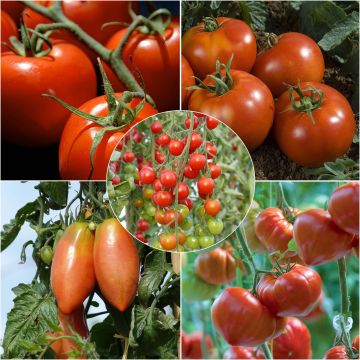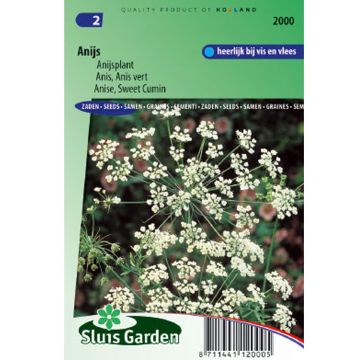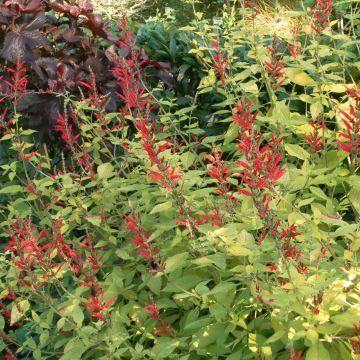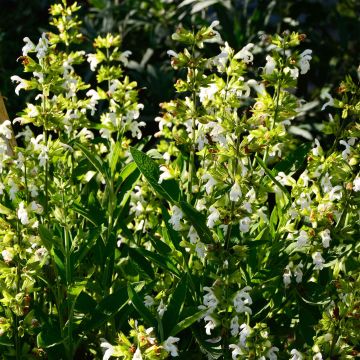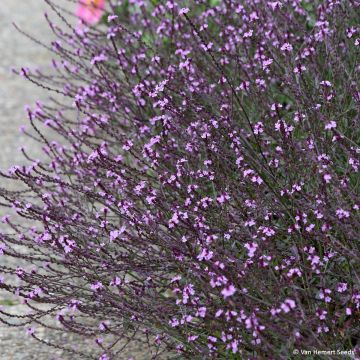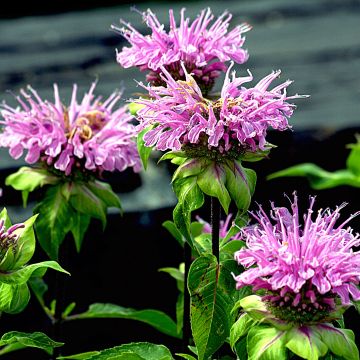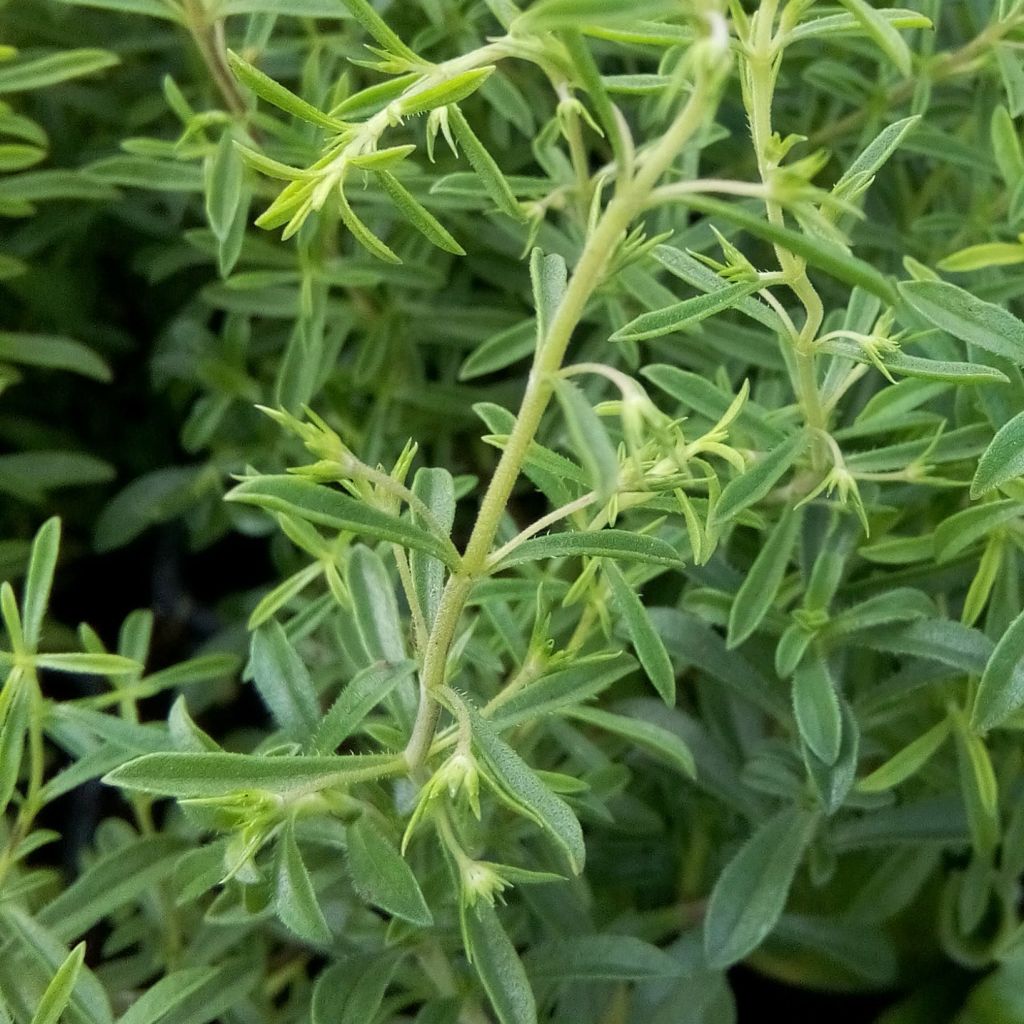

Sarriette citron - Satureja montana citriodora
Organic Lemon Savory - Satureja montana citriodora
Satureja montana citriodora
Winter Savory
Why not try an alternative variety in stock?
View all →This plant carries a 6 months recovery warranty
More information
We guarantee the quality of our plants for a full growing cycle, and will replace at our expense any plant that fails to recover under normal climatic and planting conditions.
From €5.90 for pickup delivery and €6.90 for home delivery
Express home delivery from €8.90.
Description
The Lemon Savory (Satureja montana citriodora) is a perennial herbaceous plant, reaching a height of 30 to 40 cm (12 to 16in). This herb is cultivated for its lemon-flavoured foliage, which adds aroma to many dishes, especially fish, grilled meats, and sauces. It can also be used for infusion. Plant in spring or autumn, harvest from June to October.
Mountain Savory is a very hardy perennial herbaceous plant (up to -15°C (5°F)), belonging to the Lamiaceae family. It is a typical aromatic plant of Mediterranean cuisine, naturally growing in scrubland, fallow fields, and sunny slopes. The Savory forms a beautiful cushion of small shiny green leaves that release a strong scent, resembling that of Thyme, when crushed. This honey-producing plant has pretty white flowers with a slight pink hue from July to September.
In cooking, this lemon-flavoured and spicy herb from Provence is used as a condiment to flavour vegetables, including legumes, meats, fish, or sauces. Consumed as an infusion, it aids digestion and relieves bloating. Its leaves can also be used fresh as poultices to soothe skin irritations, such as insect bites.
It is an undemanding plant that thrives in sunny, dry, and well-drained soil. At the end of winter, prune it into a compact ball shape with shears to maintain its compact habit.
Harvest: leaves can be harvested from June to October by simply cutting the branches, ideally in the morning. It is preferable to carry out this operation before flowering to preserve the fullness of its fragrance.
Storage: The leaves of Savory are best consumed fresh to fully enjoy their fragrance. However, for longer storage, you can dry the leaves in the shade and keep them in airtight jars.
Gardener's tip: in the garden, don't hesitate to mix things up by placing some aromatic plants like Savory in the middle of your perennial flower beds or in sunny rockeries. They will integrate perfectly and the sometimes strong scents of aromatic plants often have the ability to repel insects that may attack more delicate plants, such as certain rose bushes.
Report an error about the product description
Organic Lemon Savory - Satureja montana citriodora in pictures
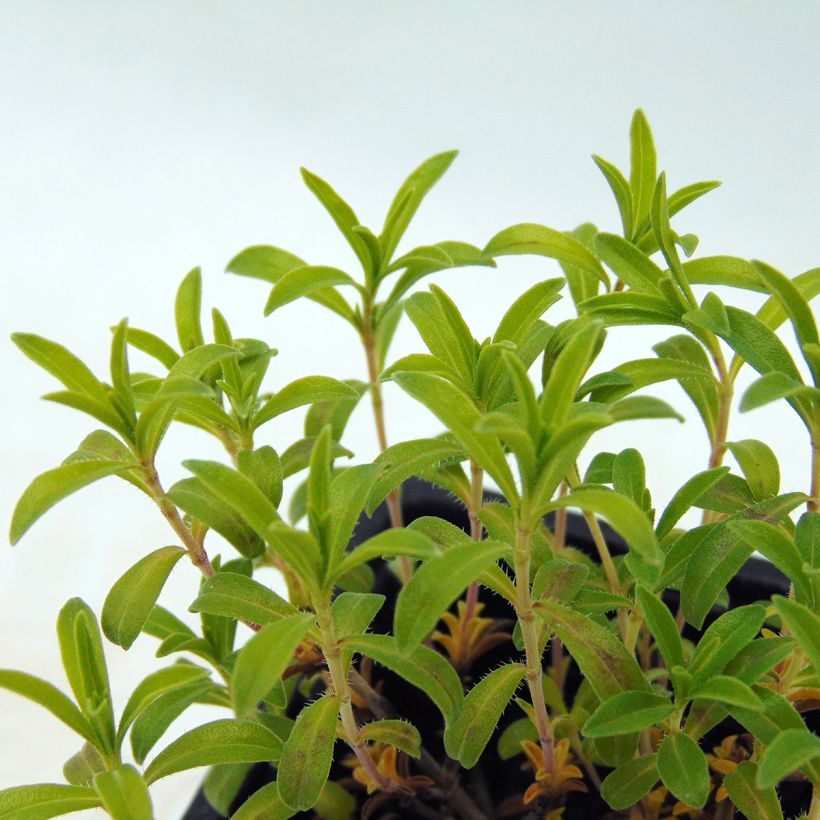

Harvest
Plant habit
Foliage
Other Herbs A to Z
Planting and care
Savory is a hardy and easy-to-grow herb that thrives in poor, light, and even rocky soils that are well-drained. If your soil is rather moist and clayey, we recommend growing it in a pot where it will do very well. Planting can be done in spring (April-May) or autumn (September-October).
In the ground: Choose a very sunny location. Space the plants 30 cm (12in) apart in all directions. Dig a hole (3 times the size of the root ball), add well-rotted compost, place the root ball, and cover with soil. Firmly press down and water lightly.
In a pot: Place a layer of gravel or clay balls at the bottom of the pot to facilitate drainage. Fill the pot with a mixture of potting soil and garden soil. Place the root ball, cover with soil, and firmly press down. Water lightly. Place your pot in the sun.
As for maintenance, water sparingly, mainly in summer, as Savory does not appreciate excessive moisture. For pot cultivation, do not let water stagnate in the saucer.
An annual pruning (on the current year's wood) will maintain a nice round and compact habit.
Cultivation
Care
Intended location
-
, onOrder confirmed
Reply from on Promesse de fleurs
Herbs
Haven't found what you were looking for?
Hardiness is the lowest winter temperature a plant can endure without suffering serious damage or even dying. However, hardiness is affected by location (a sheltered area, such as a patio), protection (winter cover) and soil type (hardiness is improved by well-drained soil).

Photo Sharing Terms & Conditions
In order to encourage gardeners to interact and share their experiences, Promesse de fleurs offers various media enabling content to be uploaded onto its Site - in particular via the ‘Photo sharing’ module.
The User agrees to refrain from:
- Posting any content that is illegal, prejudicial, insulting, racist, inciteful to hatred, revisionist, contrary to public decency, that infringes on privacy or on the privacy rights of third parties, in particular the publicity rights of persons and goods, intellectual property rights, or the right to privacy.
- Submitting content on behalf of a third party;
- Impersonate the identity of a third party and/or publish any personal information about a third party;
In general, the User undertakes to refrain from any unethical behaviour.
All Content (in particular text, comments, files, images, photos, videos, creative works, etc.), which may be subject to property or intellectual property rights, image or other private rights, shall remain the property of the User, subject to the limited rights granted by the terms of the licence granted by Promesse de fleurs as stated below. Users are at liberty to publish or not to publish such Content on the Site, notably via the ‘Photo Sharing’ facility, and accept that this Content shall be made public and freely accessible, notably on the Internet.
Users further acknowledge, undertake to have ,and guarantee that they hold all necessary rights and permissions to publish such material on the Site, in particular with regard to the legislation in force pertaining to any privacy, property, intellectual property, image, or contractual rights, or rights of any other nature. By publishing such Content on the Site, Users acknowledge accepting full liability as publishers of the Content within the meaning of the law, and grant Promesse de fleurs, free of charge, an inclusive, worldwide licence for the said Content for the entire duration of its publication, including all reproduction, representation, up/downloading, displaying, performing, transmission, and storage rights.
Users also grant permission for their name to be linked to the Content and accept that this link may not always be made available.
By engaging in posting material, Users consent to their Content becoming automatically accessible on the Internet, in particular on other sites and/or blogs and/or web pages of the Promesse de fleurs site, including in particular social pages and the Promesse de fleurs catalogue.
Users may secure the removal of entrusted content free of charge by issuing a simple request via our contact form.
The flowering period indicated on our website applies to countries and regions located in USDA zone 8 (France, the United Kingdom, Ireland, the Netherlands, etc.)
It will vary according to where you live:
- In zones 9 to 10 (Italy, Spain, Greece, etc.), flowering will occur about 2 to 4 weeks earlier.
- In zones 6 to 7 (Germany, Poland, Slovenia, and lower mountainous regions), flowering will be delayed by 2 to 3 weeks.
- In zone 5 (Central Europe, Scandinavia), blooming will be delayed by 3 to 5 weeks.
In temperate climates, pruning of spring-flowering shrubs (forsythia, spireas, etc.) should be done just after flowering.
Pruning of summer-flowering shrubs (Indian Lilac, Perovskia, etc.) can be done in winter or spring.
In cold regions as well as with frost-sensitive plants, avoid pruning too early when severe frosts may still occur.
The planting period indicated on our website applies to countries and regions located in USDA zone 8 (France, United Kingdom, Ireland, Netherlands).
It will vary according to where you live:
- In Mediterranean zones (Marseille, Madrid, Milan, etc.), autumn and winter are the best planting periods.
- In continental zones (Strasbourg, Munich, Vienna, etc.), delay planting by 2 to 3 weeks in spring and bring it forward by 2 to 4 weeks in autumn.
- In mountainous regions (the Alps, Pyrenees, Carpathians, etc.), it is best to plant in late spring (May-June) or late summer (August-September).
The harvesting period indicated on our website applies to countries and regions in USDA zone 8 (France, England, Ireland, the Netherlands).
In colder areas (Scandinavia, Poland, Austria...) fruit and vegetable harvests are likely to be delayed by 3-4 weeks.
In warmer areas (Italy, Spain, Greece, etc.), harvesting will probably take place earlier, depending on weather conditions.
The sowing periods indicated on our website apply to countries and regions within USDA Zone 8 (France, UK, Ireland, Netherlands).
In colder areas (Scandinavia, Poland, Austria...), delay any outdoor sowing by 3-4 weeks, or sow under glass.
In warmer climes (Italy, Spain, Greece, etc.), bring outdoor sowing forward by a few weeks.



































